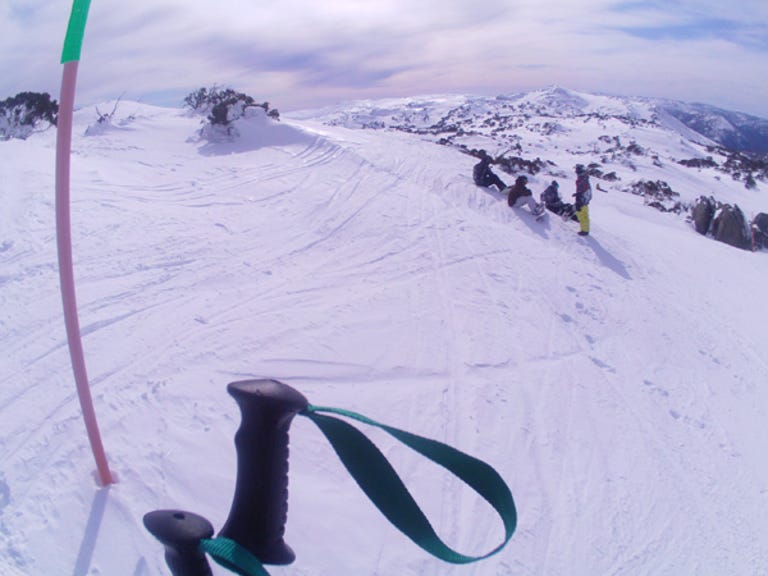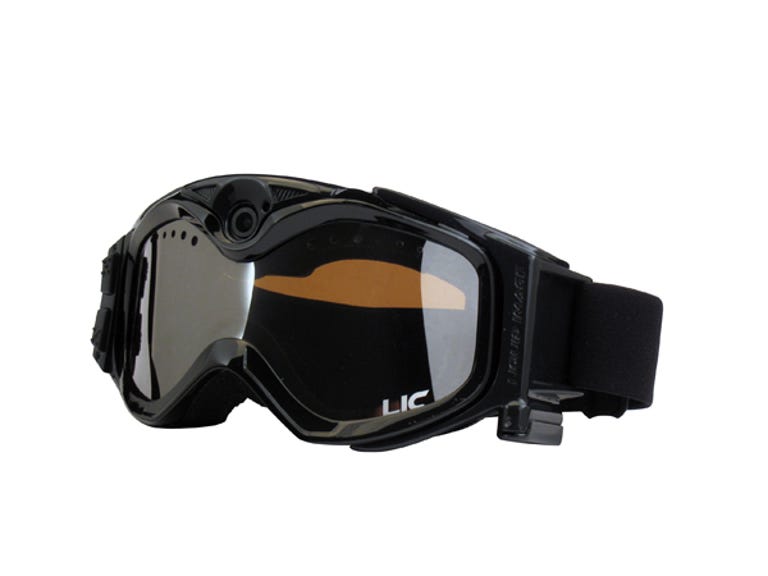 Why You Can Trust CNET
Why You Can Trust CNET Liquid Image Summit Series Snow Board Goggle Cam review: Liquid Image Summit Series Snow Board Goggle Cam
Liquid Image's goggles performed really well and can be turned on and forgotten about, but can only really be used while skiing, simply because of its design.
Liquid Image's snow goggles almost look like any other ski goggle you'd find on the market. However, there are a number of design aspects that set it apart from others; they're bigger, slightly heavier and have a camera subtly sitting front and centre inside the goggles.
The Good
The Bad
The Bottom Line
Design and features

When we say heavy, we don't actually mean it'll weigh you down and have you struggling to hold your head up. They weigh 240g with battery, as opposed to ski goggles without any hardware weighing around 200g. Due to the design of the goggles and the in-built hardware, they tend to sit out a bit more from the face.
The hands-free camera has a 5-megapixel (2560x1920-pixel) image sensor that's also capable of recording 1280x720-pixel videos at 30 frames per second with audio. The controls are on the right side of the snow goggles, and are large enough to press while wearing gloves.
There are two buttons: one for shutter and select, the other is power and the two modes (photo and video). The only indication you get on whether you've hit the correct button is that a red light flashes inside the goggles between your eyes to indicate that you're using camera mode, and blue when in video mode. The flashing light inside the goggles is the only warning you get that will remind you that the device is recording, and is easy to forget about after multiple uses.
Inside the goggles is an LCD display, which lets you see the battery life, the number of files recorded and, as mentioned previously, the indicator light. To turn on video mode, just hit the power button for at least a second, which will turn the camera on, then hit the shutter button just above and it'll start recording. To take photos, hit the power button and then hit that button again for still images. The LCD will display the camera icon to let you know you're in the still images mode. To power off the goggles, press the power button for a couple of seconds. If the camera is not used for three minutes, it'll turn off automatically.
The goggles give you a 136-degree field of view when worn, which disrupts your peripheral vision, and when recording video the camera doesn't seem to capture what you see through the goggles (more on this later).
The eye wear has a microSD/SDHC card slot that can be expanded to 32GB and a rechargeable Lithium battery.
While the goggles felt comfortable to begin with, they did start to push down against the nose, and, if you wear glasses, it'll be a tad uncomfortable to wear, particularly for hours on end.
Performance
The goggles performed admirably when we took them for a test drive at the ski fields. People didn't notice they were being recorded, and were surprised when we pointed out our third eye.
One lift attendant even thought they were "the coolest thing I've seen on the mountain all year".
We were happy with the video and photo results that the goggles recorded, but, unfortunately, due to the camera angle, the video didn't quite capture what we could see with our own eyes, as it chopped the top part (and the view) of what we were seeing on the ski fields, giving the impression that we were staring down into the snow the entire time.
After a couple of turns, and having seen the footage recorded, we learned how to correctly angle our head to record what we were seeing.
Sound was picked up really well, and came through crisp in playback. Unfortunately, and we can't see a way around this, is that the mic also picked up on wind and the rushing sound as we skied down the slopes.
Photos taken appeared slightly curved giving off the impression that it's taken with a fish-eye lens, which is not necessarily a bad thing.
Liquid Image estimates battery life at two hours of video. When we took the goggles out to the ski fields, the battery lasted two and a half days after taking photos, and three hours of video.
While there are RCA cables included in the box, it would've been exciting if there was a way to view the footage while still on the ski field. Something that would allow us to view the footage on our smartphone, and see whether we needed to do another shoot to show off our skiing prowess.
Conclusion
The Liquid Image goggles come in white or black for AU$399, which admittedly is quite pricey for snow goggles. There are other sports cameras on the market that can be attached to a helmet, belt and so on for a lot cheaper, and can be used for any occasion, whereas Liquid Image goggles can only really be used for the snow simply because of its design. In saying that, if you're a snow bunny and practically live on the ski fields, then we highly recommend them.
To find out where you can purchase the goggles, visit Active Outthere, which also sells other sporting goggles with an in-built camera.
Amanda Tse and Alistair MacIntosh aka Ski Man contributed to this article.
